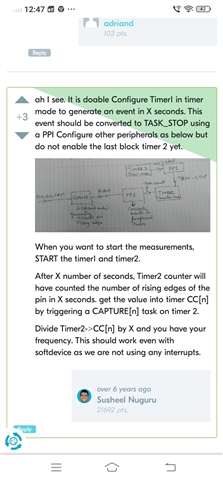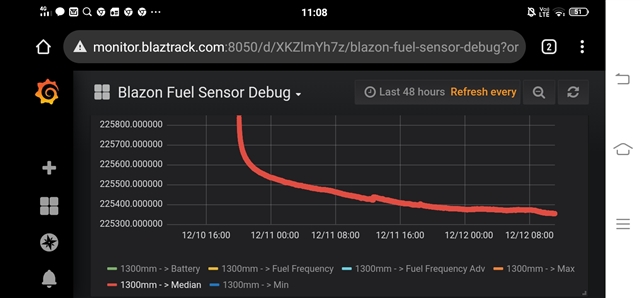
Using above strategy for frequency measurement. Frequency source connected with one gpio pin.
Only GPIOTE PPI Timer modules are involved
HFXO is in use full time through sd_...request command
Frequency observed is showing a one sided trend, which continues for day. A fix source of frequency is connected to gpio, below shared graph shows frequency tick counted on nrf side via gpio.

Same source of frequency, which is in production already, normally shows a minor drift which goes up and down w.r.t. day night temperature in a periodic manner.
Whole of implementation is following below reference
Unable to debug this behaviour, no interrupts are used, all the modules are interconnected via PPI module. All sources of drift , crystal, frequency generator should act according to ambient temperature. Which should be roughly periodic. Supply voltage is also plotted and their is no such one sided trend in that.


